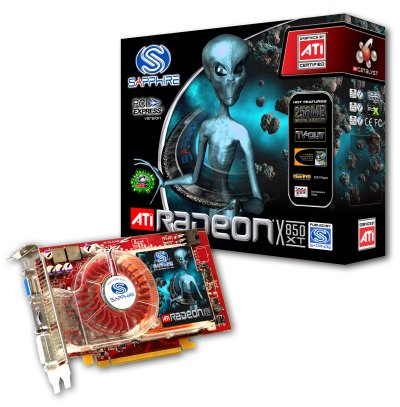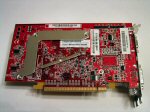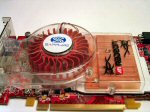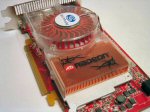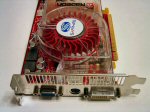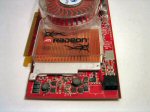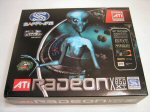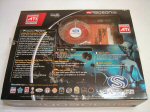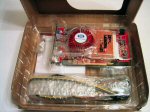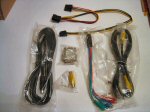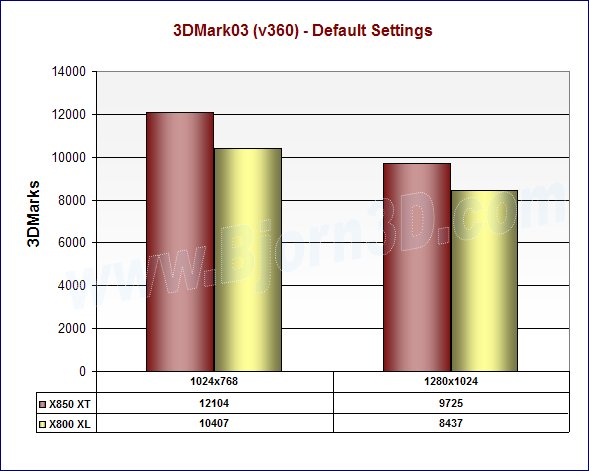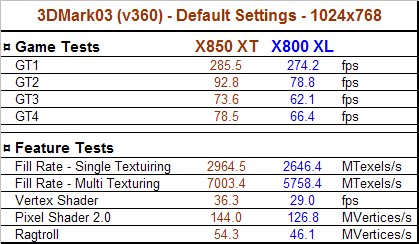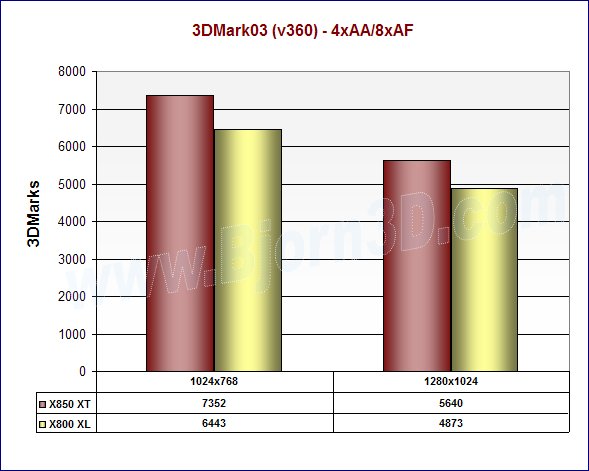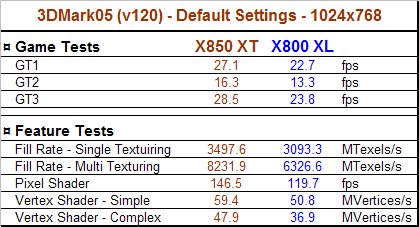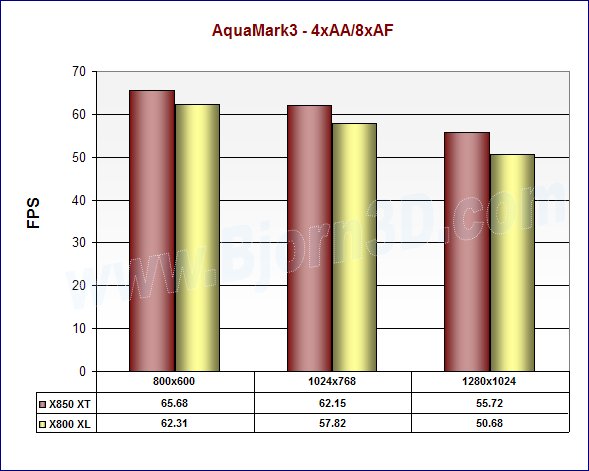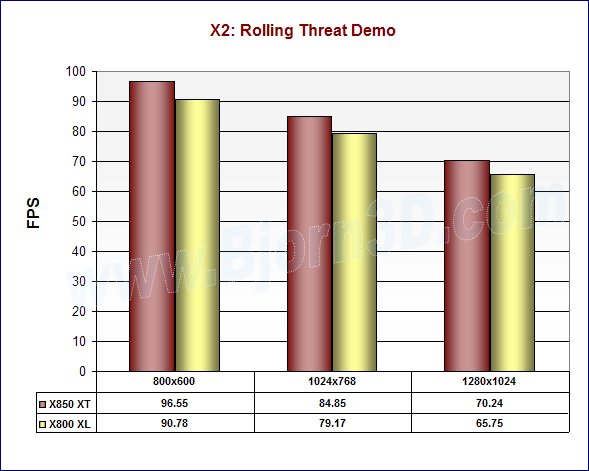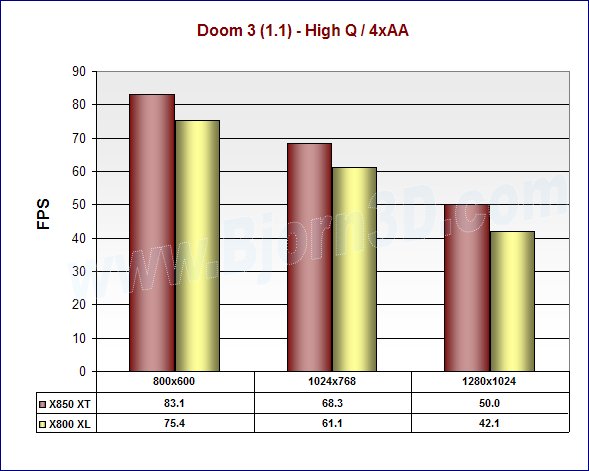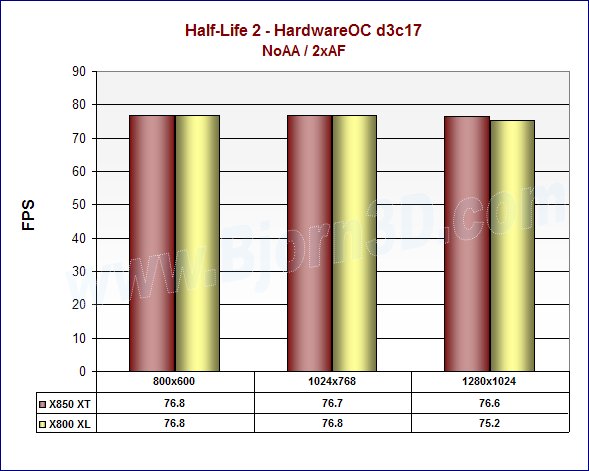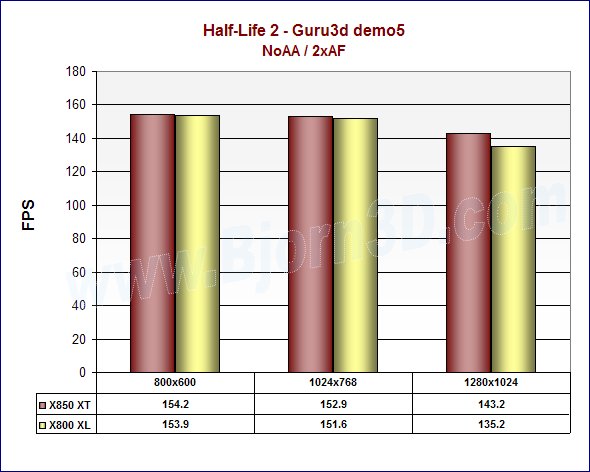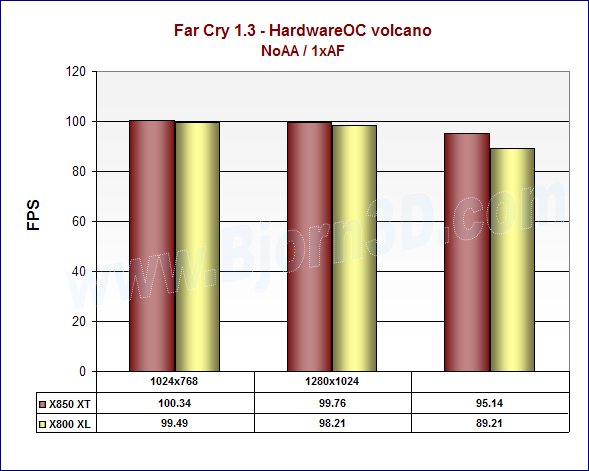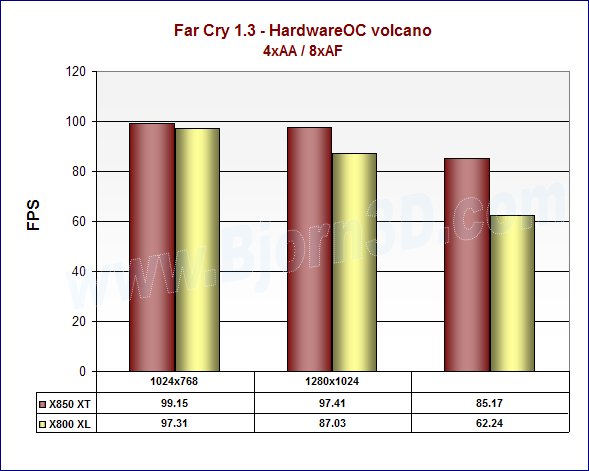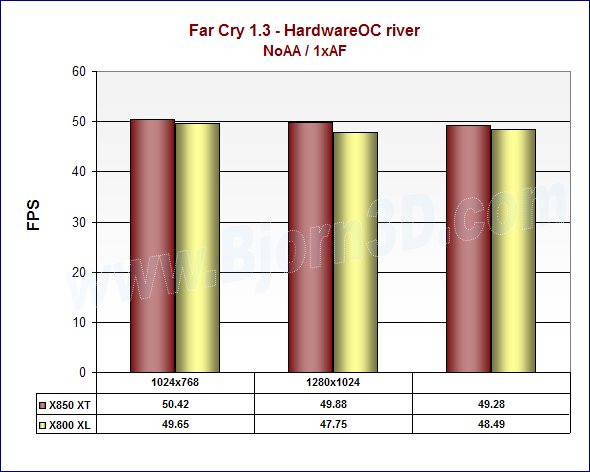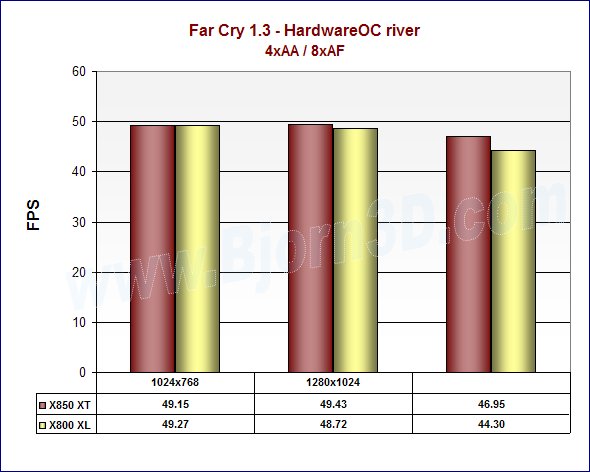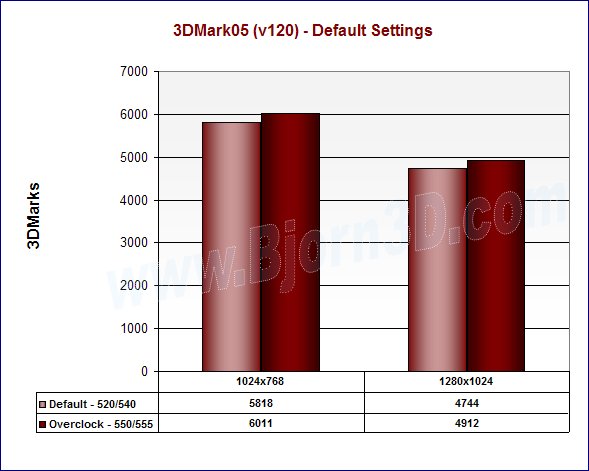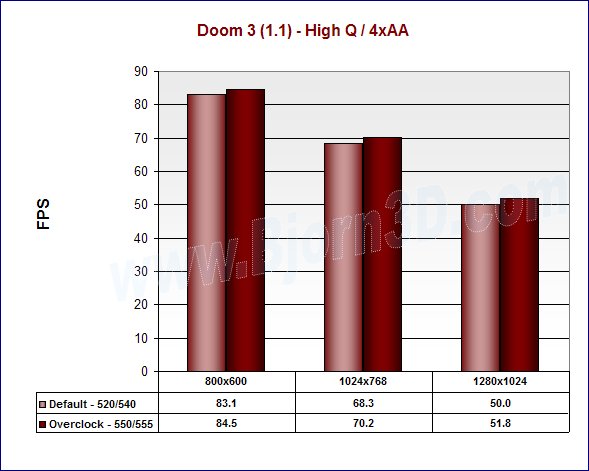Second only to the X850 XT PE, the Sapphire Radeon X850 XT offers extreme performance but at the cost of high value, just like other high-end cards. For those of you who must have the best though, this card should be on your short list of considerations.
INTRODUCTION
For a while, the Radeon X800 XT PE was the best ATI-based card you could get. At the end of last year, ATI changed that by releasing the X850 series of cards. Just like the X800 series, the X850 comes in several flavors: Pro, XT, and XT Platinum Edition (in order of least to most horsepower and therefore cost).
Because Sapphire works so closely with ATI, it is a leader in ATI-based cards and is usually one of the first to market with new cards. In this review, I’ll be taking a look at the Sapphire Radeon X850 XT PCI Express. Users with AGP motherboards need not despair for this card and Sapphire’s other latest are now also available in AGP format as well. This review will only cover the PCI Express version, but you can expect almost the exact same performance from the AGP version since PCI Express doesn’t currently usually offer any of an advantage over AGP. Enough chit chat; let’s dig into the review of one of Sapphire’s top cards.
FEATURES and SPECIFICATIONS
Features
- 256MB of GDDR3 memory
- 256-bit memory interface
- 16 parallel pixel pipelines
- PCI Express x16 lane native support
- Dual display support
- Dual integrated 400MHz DAC’s
- 2048×1536 @ 85Hz Maximum Resolution
- S-Video TV-out port
- Full support for DirectX® 9.0 and the latest OpenGL® 2.0 functionality
- SMARTSHADER™ HD technology
- SMOOTHVISION™ HD technology
- 3Dc™ High quality 4:1 Normal Map Compression delivers beautiful scenes without the performance hit.
- Unique VIDEOSHADER™ HD engine uses programmable pixel shaders to accelerate video processing and provide better-looking visuals
- HYPER Z™ HD is optimized for performance at high display resolutions, including widescreen HDTV resolutions.
Specifications
| RADEON X800 XT | RADEON X800 XL | RADEON X850 XT | |
| Bus Type | PCI Express x16 | PCI Express x16 | PCI Express x16 |
| Memory Amount (MB) | 256 | 256 | 256 |
| Memory Type | GDDR3 | GDDR3 | GDDR3 |
| Memory Interface | 256-bit | 256-bit | 256-bit |
| Memory Clock Speed (MHz) | 500 | 490 | 540 |
| Engine Clock Speed (MHz) | 500 | 400 | 520 |
| Pipelines | 16 | 16 | 16 |
| Pixel Fillrate | 8 Gpixels/sec | 6.4 Gpixels/sec | 8.6 Gpixels |
| Geometry Rate | 500 MTriangles | 400 MTriangles | 540 MTriangles |
|
$$ FIND THE BEST PRICES FOR THE Sapphire Radeon X850 XT PCIe $$ |
CLOSER LOOK and BUNDLE
Closer Look at the Card
Sapphire took no radical departure from ATI’s reference design when designing its X850 XT. You can see that it features the same large, plastic-shrouded cooler with copper heatsink. Apparently, cranking up the juice led to increasing the cooler size in the X850 XT’s case. This is a two-slot solution, a rare fact in the world of ATI cards. You can see on the back of the card that there is no ATI Theater chip present.
The plastic shroud holds in the interesting red fan and hovers over the metal that is covering the VPU and memory chips. This blower type design is intended to push air out of the PC through the slotted PCI bracket cover. Unfortunately, it is kind of loud during system boot. After about five seconds of sounding like a small blow dryer, it settles at a much more tolerable audio level, but it is still not what I would call quiet after slowing down. At times, I could distinguish the X850 XT’s fan and air exhaust noise from the rest of my system, which has four 80mm case fans and a 90mm fan on my CPU cooler.
I was kind of surprised to see Sapphire choose a VGA and DVI connector combo instead of a dual DVI configuration, especially since so many high-end cards seem to feature dual DVI connectors these days. In addition to the VGA and DVI connectors, the card also features a TV-out/S-video out connector. The X850 XT also features HDTV display support.
Bundle
- Sapphire X850 XT Video Card
- Installation/Getting Started Guide
- DVI-to-VGA Adapter
- S-video Cable
- Composite Video Cable
- Component Video Connector
- 6-pin PCI Express Power Cable
- Sapphire Sticker
- Installation Driver CD
- CyberLink PowerDVD 5
- Redline Tweak Utility
- Prince of Persia: Sands of Time (full version)
- Splinter Cell: Pandora Tomorrow (full version)
I really wish Sapphire would update the games in its bundle. Although good games, I’ve seen them one too many times now. Still, it is better than not getting any games or getting crappy games or only demos. The rest of the bundle is pretty standard stuff. I’m happy to see Sapphire continue to include the component video cable.
There is good news on the bundle front! Sapphire just announced its new software bundle program – Sapphire Select – in which new Sapphire bundles will allow users to choose the software they want and then be offered others at a discount. Check out the press release here. It sounds like a great idea; I can’t wait to see how this develops and influences the competition.
|
$$ FIND THE BEST PRICES FOR THE Sapphire Radeon X850 XT PCIe $$ |
TEST SYSTEM and BENCHMARKS
The test system this time around is based on the nForce4 SLI platform. The motherboard I used is the DFI LANParty NF4 SLI-DR, and the processor is an Athlon 64 3200+, which runs at 2.0GHz. I compared the X850 XT to Sapphire’s own X800 XL using the latest publicly available and supported drivers at the time I start benchmarking (Catalyst 5.3). Here is a complete look at my test system, followed by a list of the benchmarks I used to compare these two cards.
Test System
- AMD Athlon 64 3200+
- DFI LANParty NF4 SLI-DR Motherboard (review)
- Corsair TWINX1024-3200XL (review)
- Video Card 1: Sapphire Radeon X850 XT – DirectX 9.0c, Catalyst 5.3
- Video Card 2: Sapphire Radeon X800 XL – DirectX 9.0c, Catalyst 5.3 (review)
- Maxtor 120GB Serial ATA 7200RPM Hard Drive
- Windows XP with Service Pack 2
- 17″ Solarism LCD Monitor – max resolution 1280 x 1024
Benchmarks
- 3DMark03 v3.6.0 – default settings and 4xAA / 8xAF
- 3DMark05 v1.2.0 – default settings
- AquaMark3 – 4xAA / 8xAF, high quality
- Half-Life 2 – NoAA / 2xAF and 4xAA / 8xAF
- Doom 3 1.1 – NoAA / High Quality and 4xAA / High Quality, both with highest details set in game
- Far Cry 1.3 – NoAA / 1xAF and 4xAA / 8xAF
- X2: The Threat, Rolling Demo – automatic quality set in benchmark with antialiasing, bumpmaps and shadows enabled in benchmark
|
$$ FIND THE BEST PRICES FOR THE Sapphire Radeon X850 XT PCIe $$ |
PERFORMANCE – 3DMARK03 and 05
There is no need for introduction to Futuremark’s 3DMark benchmarking applications. Although many people question their benchmarking relevance, their popularity and ease of use is undeniable. As long as people seem to love comparing their 3DMark results, I’ll probably include them in my reviews since they provide a good reference point. This time, I’m also including the details from the game and feature tests.
|
$$ FIND THE BEST PRICES FOR THE Sapphire Radeon X850 XT PCIe $$ |
PERFORMANCE – AQUAMARK3 and X2: THE THREAT
The AquaMark3 benchmark is based on an actual game engine, and it can really stress even the most modern cards. I ran the benchmark with 4xAA and 8xAF in the application and “Application Preference” set in the driver control panel.
This demo is also based on a game, and that is X2: The Threat of course. The Rolling Demo renders a bunch of different game scenes and reports scores for each scene and an average score in frames per second (FPS). The chart below just shows the average. This benchmark was run with bumpmaps, shadows and anti-aliasing set to “On” in the application and with “Application Preference” set in the driver control panel.
|
$$ FIND THE BEST PRICES FOR THE Sapphire Radeon X850 XT PCIe $$ |
PERFORMANCE – DOOM 3
While it can play fairly well on low-end systems at lower resolutions, Doom 3 can really punish a system if you crank up the details and resolution. I ran the included demo1 timedemo with quality set to high and AA turned off and also with quality set to high and AA set to 4x in the game.
|
$$ FIND THE BEST PRICES FOR THE Sapphire Radeon X850 XT PCIe $$ |
PERFORMANCE – HALF-LIFE 2
To benchmark Half-Life 2, I used the HL2 benchmark utility created by HardwareOC. I used the included HOC d3c17 map demo and Guru3d demo5 for testing. The performance appears to be quite system-limited, for my system at least. It just might be time to put more horsepower into this test system!
|
$$ FIND THE BEST PRICES FOR THE Sapphire Radeon X850 XT PCIe $$ |
PERFORMANCE – FAR CRY
Far Cry is currently one of the most pipeline-punishing PC games available. Playing at the highest resolution with eye candy maxed out and still getting playable frame rates is not really possible for even the most powerful systems and graphics cards. Once again, I used a benchmarking utility from HardwareOC to benchmark this game. This time I used the HOC volcano and river demos for testing. Like the HL2 results, these tests also appear to be CPU-limited.
|
$$ FIND THE BEST PRICES FOR THE Sapphire Radeon X850 XT PCIe $$ |
OVERCLOCKING
To overclock the Sapphire X850 XT, I used ATI Tray Tools. Although Tray Tools autodetected an overclock of 567MHz for the core and 549MHz for the memory, the system would BSOD (“blue screen of death”) while trying to run 3DMark05. Unfortunately, I didn’t even get close to the 567MHz mark on the core before I could finally run 3DMark05. BSOD’s also occurred at the following settings: 560MHz core / 570MHz memory and 555MHz core / 560MHz memory. Recall that the default clock speeds for the core and memory are 520MHz and 540MHz, respectively.
I finally settled on an overclock of 550MHz core / 555MHz memory since 3DMark05 would make it all the way through without any stability problems. Then I moved on to make sure other benchmarks and games were stable, which they were. I really expected a little more, but that was mostly due to Tray Tools’ strangely high autodetection. It’s easy to take comfort, though, in the fact that 550MHz is 10MHz higher than PE levels, which is great news and not surprising since this card is essentially the same as the X850 XT PE.
|
$$ FIND THE BEST PRICES FOR THE Sapphire Radeon X850 XT PCIe $$ |
CONCLUSION
Overall, the Sapphire Radeon X850 XT is a mixed bag. The performance is great, but the level of value is low, which happens to be the case with all high-end cards regardless of brand or VPU/GPU. If you are willing to do a little overclocking to PE speed, have a $500 budget and want the best ATI performance available, then this is a no-brainer. Get this card and be the envy of your friends (regardless of whether they own NVIDIA or ATI cards, they will drool). On the other hand, if you want excellent value and the most bang for your buck, then the X850 XT is not for you. Sapphire’s X800 XL would make a perfect candidate for your machine at around $170 less (the X800 XL price is around $310 for OEM right now).
The testing I did showed the X800 XL pretty close to the X850 XT in many benchmarks, but it’s important to understand that the X850 XT definitely pulls away from the X800 XL as resolution and AA/AF levels increase. For max details at max resolution, the X850 XT is much less likely to fail you in the middle of intense fragathons by dropping below playable frame rates. It would be wisely paired with a high-end processor if that is in your budget as well to ensure that you are not CPU-limited in your gaming adventures.
Pros:
+ Awesome performance
+ Decent bundle
+ Sapphire brand = more availability and less expensive than competition
+ Cooler does an excellent job
+ Very close to X850 XT PE performance
+ Overclocked slightly beyond PE speed (note: your overclocking results will vary)
Cons:
– Two-slot solution
– Not very quiet
– Not dual DVI
– Bundle could use an update
– Expensive
Final Score: 8 out of 10 and Bjorn3D Seal of Approval
 Bjorn3D.com Bjorn3d.com – Satisfying Your Daily Tech Cravings Since 1996
Bjorn3D.com Bjorn3d.com – Satisfying Your Daily Tech Cravings Since 1996
